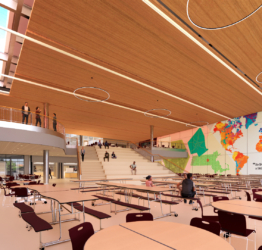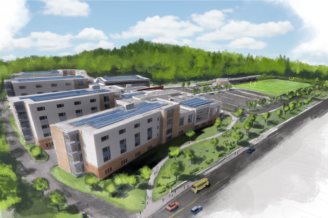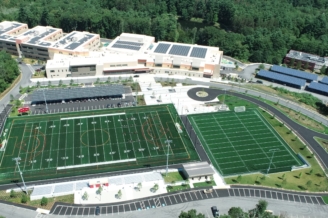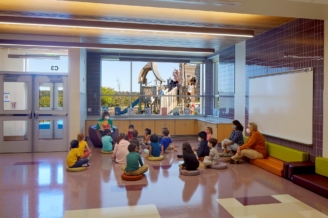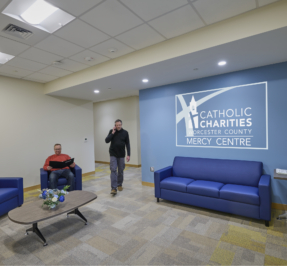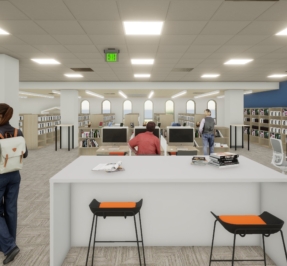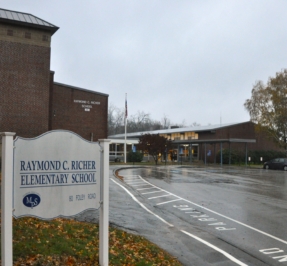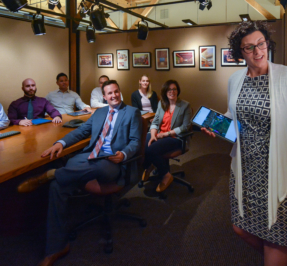Green Worcester Plan Informs Doherty High Design
As the design of the new Doherty Memorial High School has been progressing, the City of Worcester has, at the same time, been drafting, refining and sharing its Green Worcester Plan 2020, which outlines ambitious goals for sustainability and climate resiliency on multiple fronts. From investment in renewable electricity to expanding green spaces, implementing sustainable transportation options and developing an enhanced local food system, the plan is both comprehensive and progressive in its approach.
One of the key goals of the Green Worcester Plan is net-zero carbon emissions by city operations by 2050. With that goal in mind, Doherty will be the most sustainable municipal building in Worcester when it opens in 2024. Although LPA|A’s work on Doherty began before the plan was in place, the school will be the first city building constructed under the new plan, and the plan has helped to inform the design team’s approach. LEED certification and net zero readiness were already goals for the project, but the Green Worcester Plan’s focus on the reduction of fossil fuels, in particular, has had a major impact on key elements of Doherty’s building systems.

The new Doherty High School has been highly anticipated for many years, and community interest in the project is high. A well-attended public Sustainability workshop in October of 2020 made clear the community’s interest in the reduction or elimination of fossil fuels from the final building design. To achieve that end, a high-efficiency natural gas-fired HVAC system that was originally considered for the project was significantly scaled back such that gas-fired boilers are serving only as a back up system for unusually cold days and to ensure resiliency in cases of outages. This and other HVAC design changes resulted in an 85% reduction in projected fossil fuel usage from the original design, which was presented to the community on March 8th.
The building is now projected to be not just carbon neutral, but carbon negative — meaning energy transmission losses are offset by the energy produced on site — achieved through a number of strategies. Roof top solar photovoltaics combined with an HVAC system that is primarily electric, as well as a highly efficient, energy-saving, building envelope design will make this 420,000 square foot school a model for efficiency in the city.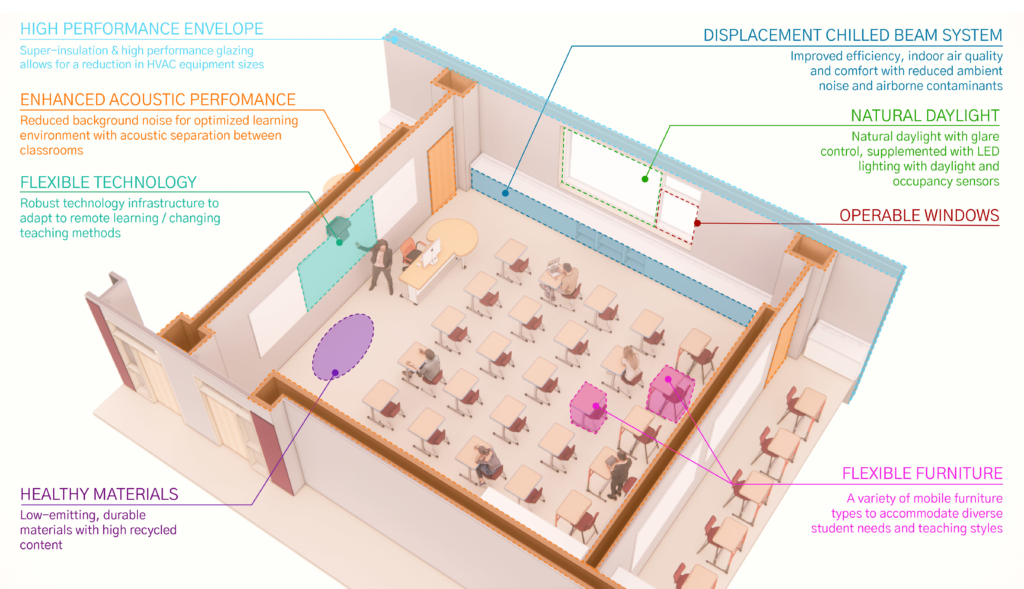
The measures being implemented are not only designed to significantly reduce carbon footprint for the building, but also prioritize a comfortable and healthy learning environment for students and staff.
“Multiple studies have shown that facilities that combine higher efficiency envelopes with properly designed HVAC and air flow systems, provide a multitude of benefits such as even temperatures, less outside sound disruptions, and healthier, comfortable, and more productive environment for its occupants,” said John Odell, Energy and Asset Director for the City of Worcester.

Categorized In: Articles, News
Tagged In: K-12 Schools, Sustainable Design, Worcester
Share This



